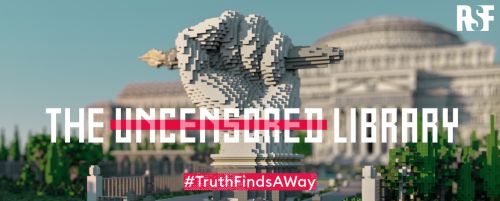
Reporters Without Borders has launched “The Uncensored Library,” an Open Server for Minecraft that houses articles from journalists that have been banned by governments around the world.
The non-profit organization discussed the purpose behind their latest project in a blog post on their official website:
In many countries, free information is hard to access. Blogs, newspapers and websites are censored. Journalists get arrested and have to fear for their lives.
Such censorship lets many young people grow up in systems with almost no access to independent press. Their opinions become heavily manipulated by governmental disinformation campaigns.
But although the youth in those countries differ from ours, they do what young people all around the globe do: play video games. Minecraft is a favourite – one of the world’s most successful computer games, with more than 145 million active players every month. Here communities can build entire worlds out of blocks, experience the freedom of an open world. Its creative mode is often described as “digital Lego”. In these countries, where websites, blogs and free press in general are strictly limited, Minecraft is still accessible by everyone.
Reporters Without Borders (RSF) used this backdoor to build “The Uncensored Library”: A library that is now accessible on an open server for Minecraft players around the globe. The library is filled with books, containing articles that were censored in their country of origin. These articles are now available again within Minecraft hidden from government surveillance technology inside a computer game. The books can be read by everyone on the server, but their content cannot be changed. The library is growing, with more and more books being added to overcome censorship.
Reporters Without Borders recruited 24 builders to create the library in Minecraft. They designed the building in neoclassical architectural style and spent more than 250 hours placing the more than 12.5 million blocks used in its construction.
